Do you have a question about the Eizo ColorEdge CG2700S and is the answer not in the manual?
Covers the monitor's intended applications, optimal usage, and details about the LCD panel itself.
Provides guidance on setting up the monitor, keeping it clean, and ensuring comfortable viewing.
Overview of the monitor's key features, technologies, and functionalities.
Identification and detailed description of the monitor's physical buttons, ports, and indicators.
Step-by-step guide on how to navigate and operate the monitor's control buttons and on-screen menus.
Procedure for selecting and changing the active video input source for the monitor display.
Instructions on how to select and switch between different color modes for various applications.
Basic steps for accessing and navigating the monitor's main setting menu interface.
Detailed explanation of advanced adjustment and configuration options available in the monitor's menu.
Configuration settings for the monitor's automatic calibration process, including scheduling and mode selection.
Defining specific calibration targets for brightness, color, and gamma for the SelfCalibration process.
Methods for initiating SelfCalibration, either manually or through an automated schedule.
How to view the history and outcomes of executed SelfCalibration processes.
Guide on how to use the programmable custom keys for quick access to functions.
Procedure for assigning specific monitor functions to the customizable hardware keys.
Steps to access and navigate the administrator settings menu for advanced control.
Detailed explanation of administrator-level configuration options and their effects.
Description of various color modes and their suitability for different types of SDR and HDR content.
Step-by-step instructions for configuring the monitor for optimal SDR and HDR image display.
Guidance on using ColorNavigator 7 software for calibrating and setting up SDR/HDR modes.
Troubleshooting steps to resolve issues where the monitor fails to display an image.
Solutions for common display issues such as incorrect brightness, color, or image blurriness.
Guidance and solutions for troubleshooting issues encountered with the SelfCalibration function.
Solutions for miscellaneous issues and error messages not covered in specific troubleshooting sections.
Instructions and precautions for safely detaching the monitor's stand from the unit.
Steps for mounting an optional arm or stand, including VESA compatibility and screw requirements.
Instructions for reattaching the monitor's original stand securely to the unit.
How to utilize the monitor's integrated docking station features for networking and USB connectivity.
Examples and procedures for connecting and switching between multiple external video sources.
Configuration details for the PQ Option setting and its impact on image display.
Comprehensive technical details of the monitor, including panel, video, and physical attributes.
List of trademarks and registered trademarks related to the product and its components.
Information regarding software licenses and fonts used in the monitor's operation.
Covers the monitor's intended applications, optimal usage, and details about the LCD panel itself.
Provides guidance on setting up the monitor, keeping it clean, and ensuring comfortable viewing.
Overview of the monitor's key features, technologies, and functionalities.
Identification and detailed description of the monitor's physical buttons, ports, and indicators.
Step-by-step guide on how to navigate and operate the monitor's control buttons and on-screen menus.
Procedure for selecting and changing the active video input source for the monitor display.
Instructions on how to select and switch between different color modes for various applications.
Basic steps for accessing and navigating the monitor's main setting menu interface.
Detailed explanation of advanced adjustment and configuration options available in the monitor's menu.
Configuration settings for the monitor's automatic calibration process, including scheduling and mode selection.
Defining specific calibration targets for brightness, color, and gamma for the SelfCalibration process.
Methods for initiating SelfCalibration, either manually or through an automated schedule.
How to view the history and outcomes of executed SelfCalibration processes.
Guide on how to use the programmable custom keys for quick access to functions.
Procedure for assigning specific monitor functions to the customizable hardware keys.
Steps to access and navigate the administrator settings menu for advanced control.
Detailed explanation of administrator-level configuration options and their effects.
Description of various color modes and their suitability for different types of SDR and HDR content.
Step-by-step instructions for configuring the monitor for optimal SDR and HDR image display.
Guidance on using ColorNavigator 7 software for calibrating and setting up SDR/HDR modes.
Troubleshooting steps to resolve issues where the monitor fails to display an image.
Solutions for common display issues such as incorrect brightness, color, or image blurriness.
Guidance and solutions for troubleshooting issues encountered with the SelfCalibration function.
Solutions for miscellaneous issues and error messages not covered in specific troubleshooting sections.
Instructions and precautions for safely detaching the monitor's stand from the unit.
Steps for mounting an optional arm or stand, including VESA compatibility and screw requirements.
Instructions for reattaching the monitor's original stand securely to the unit.
How to utilize the monitor's integrated docking station features for networking and USB connectivity.
Examples and procedures for connecting and switching between multiple external video sources.
Configuration details for the PQ Option setting and its impact on image display.
Comprehensive technical details of the monitor, including panel, video, and physical attributes.
List of trademarks and registered trademarks related to the product and its components.
Information regarding software licenses and fonts used in the monitor's operation.
| Screen Size | 27 inches |
|---|---|
| Resolution | 2560 x 1440 |
| Panel Type | IPS |
| Color Gamut | 99% Adobe RGB |
| Brightness | 400 cd/m2 |
| Built-in Calibration Sensor | Yes |
| Aspect Ratio | 16:9 |
| Viewing Angles | 178°/178° |
| USB Hub | Yes |
| Calibration | Hardware Calibration |
| Stand Adjustments | Height, Tilt, Swivel, Pivot |
| Connectivity | DisplayPort, HDMI, USB-C |
| USB Ports | USB Type-B x 1 |
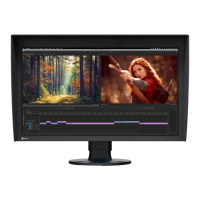
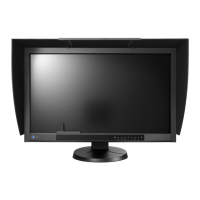
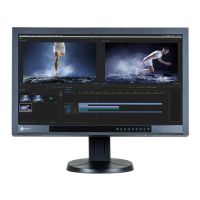


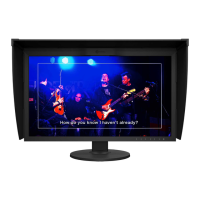


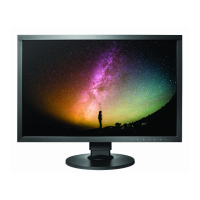



